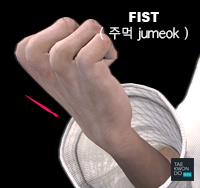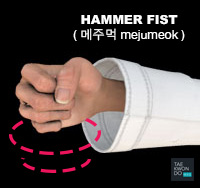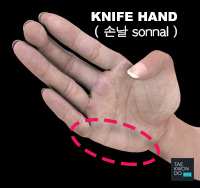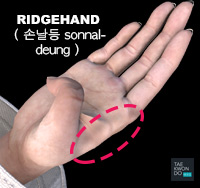Taekwondo 태권도Taekwondo Preschool
Promotion from one geup to the next can proceed rapidly in some schools, since schools often allow geup promotions every two, three, or four months. Students of geup rank learn the most basic techniques first, and then move on to more advanced techniques as they approach first dan. Many of the older and more traditional schools often take longer to allow students to test for higher ranks than newer, more contemporary schools, as they may not have the required testing intervals. View Taekwondo belt levels »
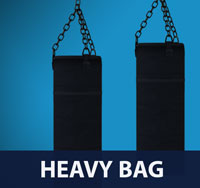
Heavy Bag
When you reach senior belt you are expected to guide the junior belts when they are beginning Taekwondo such as showing by example.
Heavy bags, standing bags, and similar apparatuses have been adapted for practicing kicking and other striking maneuvers in addition to developing punching techniques. Taekwondo and other martial arts extensively use the heavy bag.
Punching bags are often filled with grains, sand, rags, or other material and are usually hung from the ceiling or affixed to a stand. Other bags have an internal bladder to allow them to be filled with air or water. The design of a punching bag allows it to take repeated and constant physical abuse without breaking. The bag must also absorb the impact of blows, without causing harm to the user.
Heavybags are common for developing power; technique is best learned on the punch mitts or kicking pads.
* Please see a certified Master Instructor ( 사범님 sabeomnim ) for training. Proper guidance and instructions are needed to ensure safe training.
Types of Bags
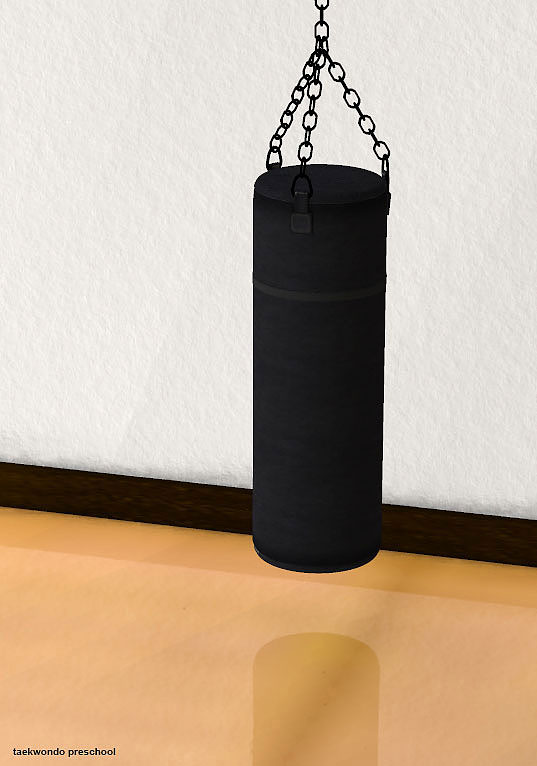
There are different types of punching bags, with different names based on their size, use and mounting method. Almost all punching bags are covered with leather, or synthetic materials such as vinyl that resist abrasion and mildew. Canvas is also used as a bag material where there is lower use and humidity.
Speed bags are small, air-filled bags anchored at the top to a rebound platform parallel to the ground. Speed bags help a fighter learn to keep his or her hands up, improve hand-eye coordination and learn to shift weight between feet when punching. They are also known as SpeedBalls or Speed Ball Bags. They are generally filled with air (mostly) and fitted around a tight PU based or other leather material. They come in various sizes, ranging from the large 13x10, 12x9, mid size 11x8, 10x7, 9x6, and small 8x5, 7x4, 6x4. Generally the larger the bag, the slower it is and the more force is required to keep it going. Large bags are used more for strength and endurance, while smaller bags focus on faster hand speed, timing and coordination. Beginners might view this bag more as a control bag, not a speed bag, for they will never go punch fast repetitively until they gain control over their swinging force and speed. A boxer normally hits the speed bag from the front with his or her fists, but it is also possible to use fists and elbows hitting the bag from all around the bag, including the front, back and sides. In this method the user may perform many diverse punching combinations that create improvised rhythmic accents.
Although speed bags are normally hung horizontally, recently the additional method of hanging a bag vertically on a wall has regained popularity. This was very popular during the early 1920-1940 era. The same punching skills may be used on the vertical bag that are used when it hangs horizontally.

Swerve balls / floor to ceiling balls / Double End Bags are almost the same as Speed balls with the only difference that the bag size shape and material may be different and that the cable system is attached to the ceiling and a clip on the floor - when the boxer places any motion on the ball, it tightly reacts by swinging fast towards them, the object is to swerve, punch, dodge and learn about co-ordination. The harder and faster they are hit - the more they rebound and react in different motions of angles, thus giving greater practice to the fighter.
Double-end bags or Focus bags are light, round bags, often anchored to floor and ceiling with elastic or semi-elastic materials. These types of bags are used to practice mobility and accuracy on a moving target.
Maize bags or Slip bags are not punched with great force but are used in boxing training to improve the athlete's head motion and ability to evade an opponent's punch, their name deriving from the fact that traditionally they are filled with maize.
A heavy bag is a larger, cylindrical bag, usually suspended by chains or ropes for practicing powerful body punches, and can be used to toughen hands, or any other limb used to hit the bag. Heavybags are for developing power; technique is best learned on the punch mitts or pads.
Pedestal bags or tower bags are heavy bags mounted on a weighted pedestal rather than being hung from above. Other variations on the standard heavy bag include horizontal suspension from both ends to practice uppercut punches and non-cylindrical shapes.
The uppercut bag began to appear towards the beginning of the century. With so many different variations of bags and training equipment for boxing taking off, the upper cut bag was and is still a common sight in clubs and gyms. Designed for upper cut practice, jabbing, curl punching and low quick burst of high and low punching practice. It allows the fighter to punch at different lengths, different speeds and different forces compared to the standard average 4 ft straight punch bags.
Body-shaped training aids such as the modern "body opponent bag" are made primarily of synthetic materials, and punching bags are sometimes mounted on a weighted pedestal rather than hanging from above. These are not punching bags in the strict sense, but modern versions of apparatus such as the wooden man apparatus of Chinese Wing Chun, the medieval quintain and target dummies used in modern bayonet training. Large inflatable balloons with weighted bases are another kind of punching bag, often painted with a picture and sold as a children's toy.
Safety Precautions
Heavy bags are typically filled with dense materials which have little "give" (packed sand, grains, etc.), for this reason hand protection is highly recommended (boxing gloves, bag gloves, training gloves, hand wraps,etc.).
Powerful strikes to the heavy bag aren't recommended for inexperienced, or younger athletes, as risk of sprain, strain, or bone plate damage may adversely affect bone structures. It is highly recommended to carefully focus strikes to reduce chance of injury (such as boxer's fracture). When striking the heavy bag, it is important to keep one's joints stacked (using the knuckles of the index and middle fingers).
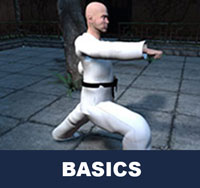
Taekwondo Basics
Here is where you can learn more about Taekwondo 태권도. Knowing the fundamental basics is very important for your learning path as you build your skills and knowledge. There are certain rules that need to be followed to show respect to the master ( 사범님 sabeomnim ), the instructors ( 교사님 gyosannim ), other practitioners and to the martial arts. They vary between schools but many have similar rules and guidelines. For more information View Taekwondo Basics »
There are five tenets defined in the International Taekwondo Federation (ITF) and several more in World Taekwondo (WT).
Perseverance ( 인내 in-nae ): "One will persevere time and time again until they have achieved a result which is adequate towards what one was trying to achieve." View Taekwondo Tenets »
RESOURCES
This article uses material from the Wikipedia articles "Heavy Bag" and "Punching Bag" which is released under the Creative Commons Attribution-Share-Alike License 3.0.



